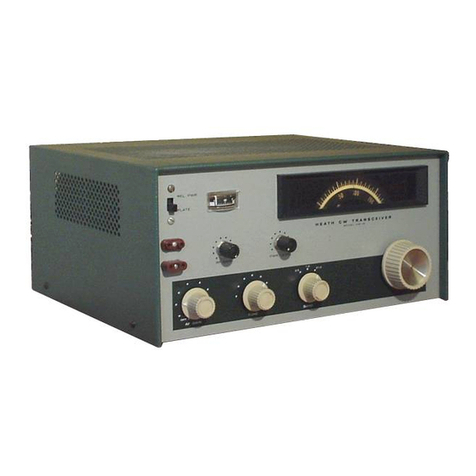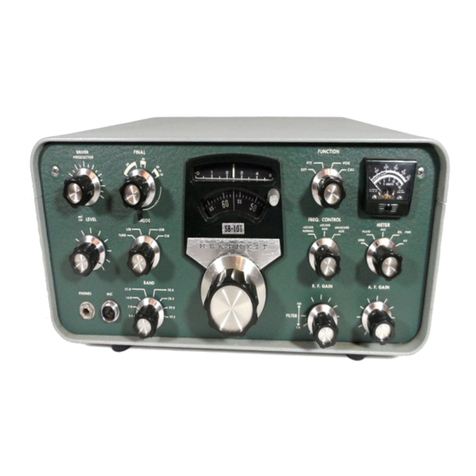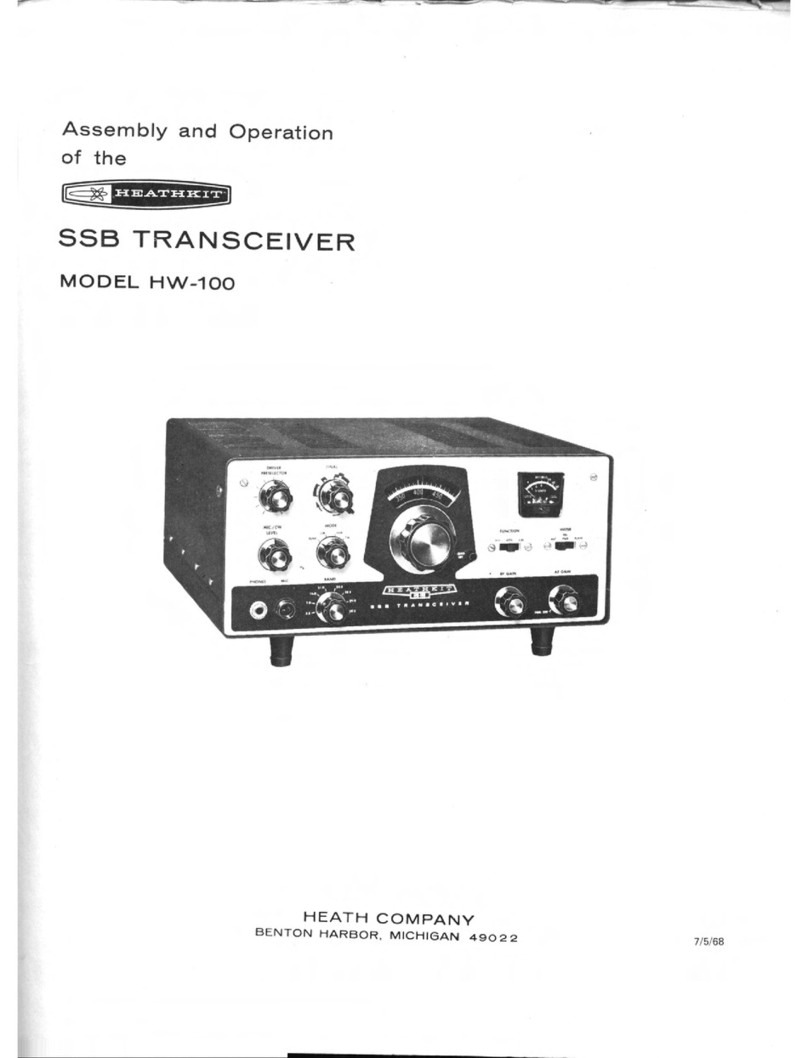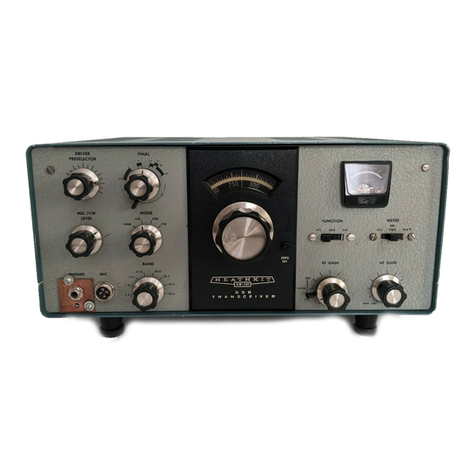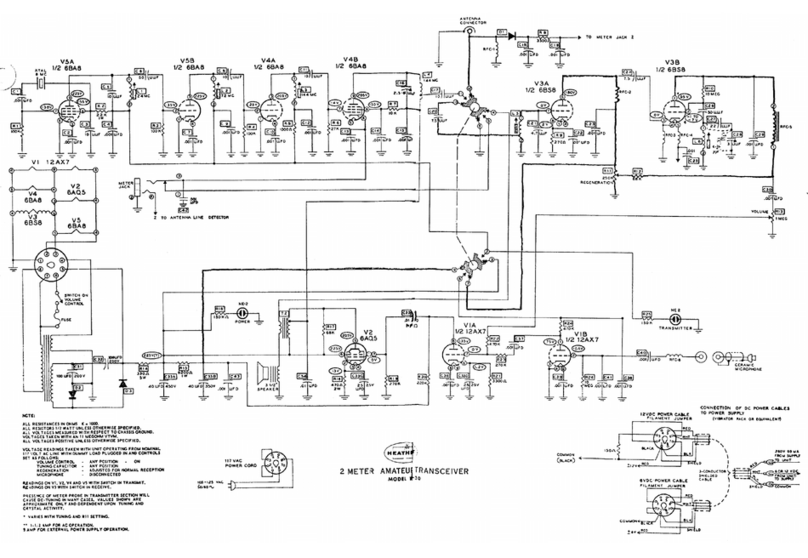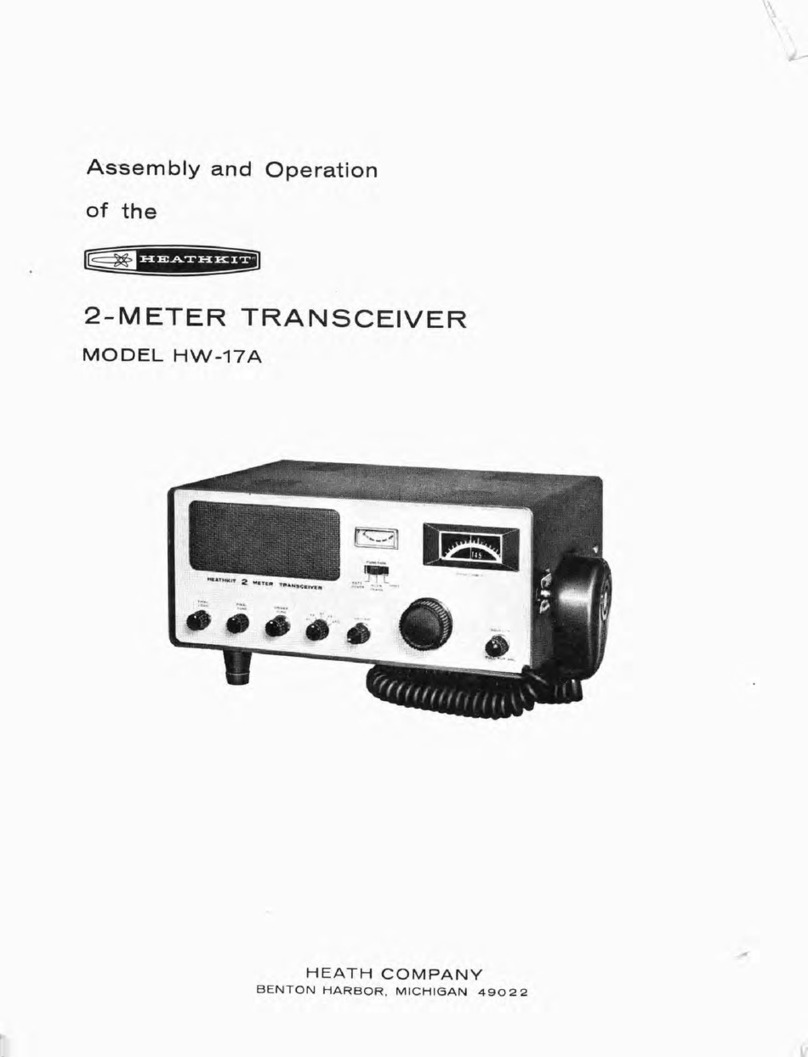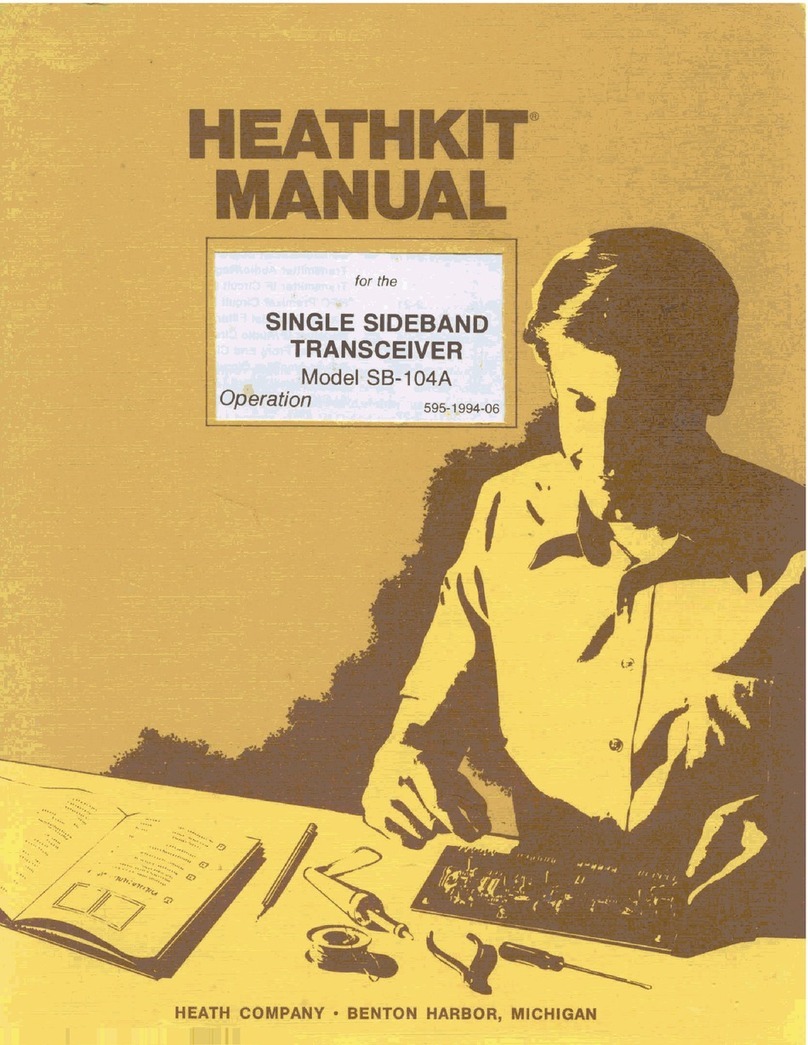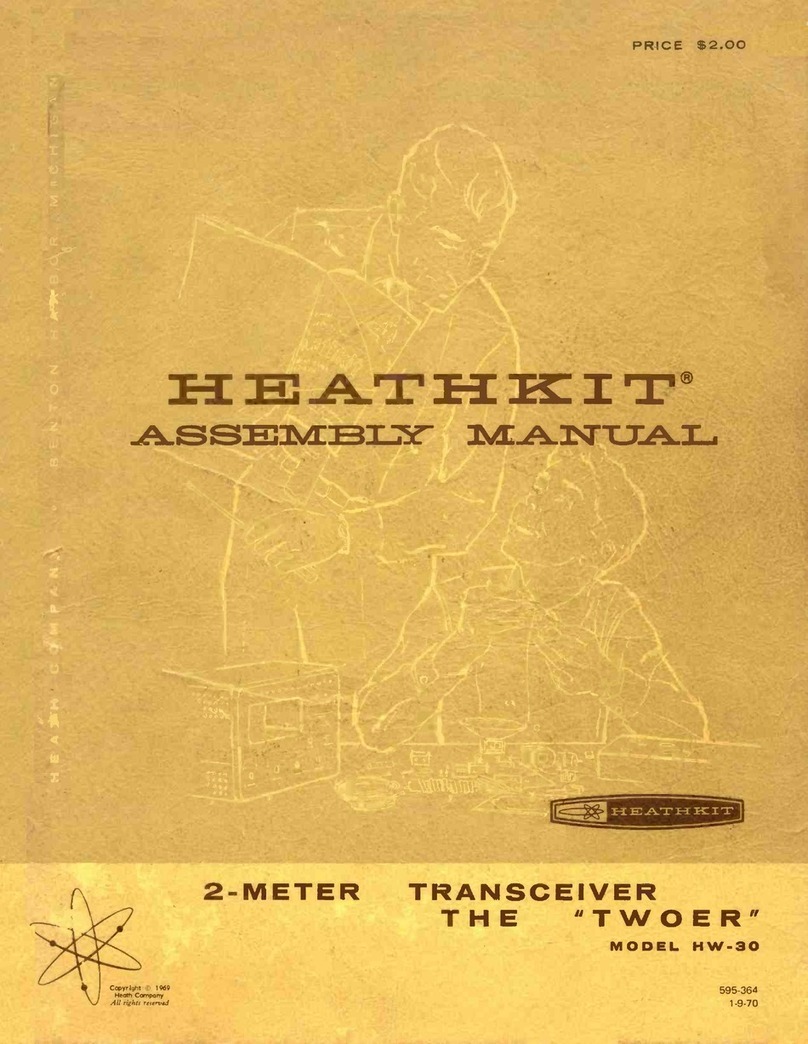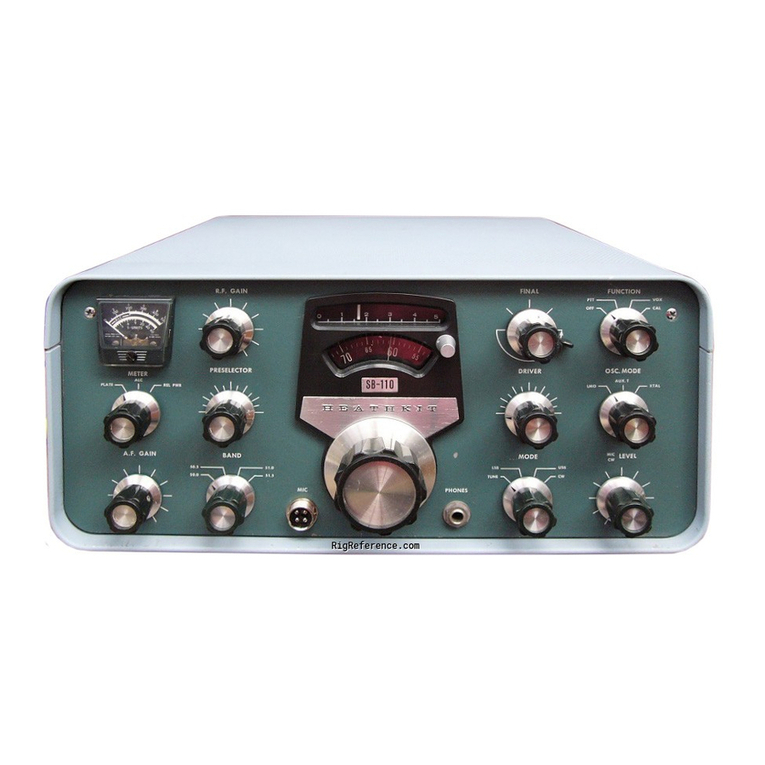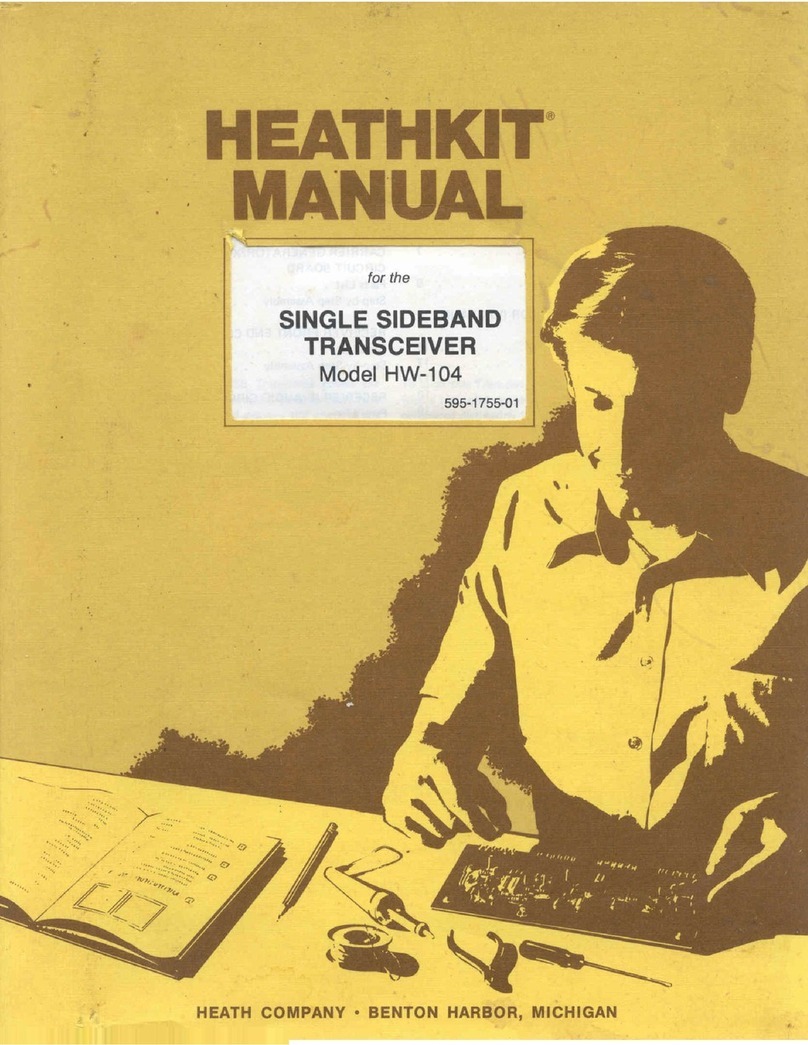Heathkit
INTRODUCTION
The Heathkit Model HW-9 Deluxe QRP CW Trans-
ceiver is acompact 80-through 10-meter HF trans-
ceiver designed with the avid low-power CW
operator in mind. It covers the lower 250 kHz of
the 80, 40, 20, and 15-meter amateur bands. When
you install the Model HWA-9 Accessory Band Pack,
the Transceiver also covers the 30, 17, and 12-meter
WARC bands and the lower 250 kHz of the 10-meter
band. Broadband circuits eliminate the need to tune
circuits within aband. Just turn the Band switch
and select the desired frequency.
The design of the wide-band front-end stages elimi-
nates the need for the customary RF amplifier in
the receiver section. This results in areceiver that
can properly handle incoming signals with awide
dynamic range. Also, only one frequency conversion
is used in the main signal path of the receiver sec-
tion. This is done to reduce spurious responses (bir-
dies) and to maintain high image rejection.
Power for this Transceiver can be furnished by a
power supply, such as the Heathkit Model PSA-9
Power Supply, or directly from any regulated 12.6
VDC source that can supply at least 1ampere.
To align this Transceiver, you should have aVTVM
(vacuum-tube voltmeter) or VOM (volt-ohmmeter),
afrequency counter capable of measuring frequen-
cies accurately up to at least 10 MHz, and a50-ohm
resistive dummy load.
The following features are also included in your
Transceiver:
•Solid-state transmit/receive switching
that permits full break-in operation.
•Continuously variable RF power output.
•Receiver incremental tuning (RIT).
•An audio-active filter with selectable
wide or narrow selectivity.
•Afront panel meter that indicates signal
strength in receive and relative power in
transmit.
This Transceiver is ahandy addition to any ham
shack for avid QRP operators, newcomers, or old
timers alike.
